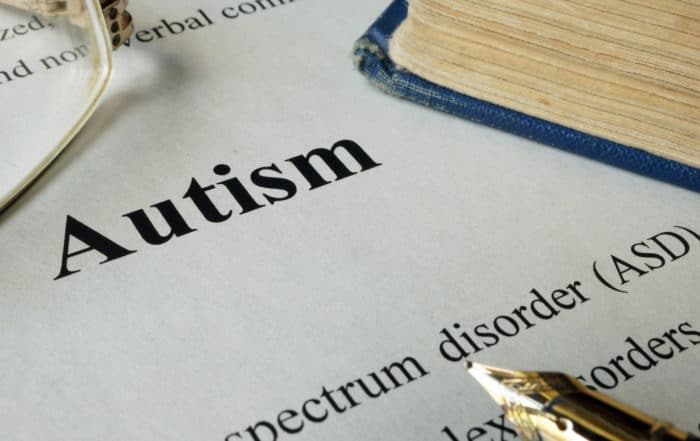Autism is sometimes described as a social/communication problem. Processing auditory information is a critical component of social communication, and people with autism spectrum disorders typically have problems processing this information. One problem occurs when a person hears speech sounds but does not perceive the meaning of the sounds. For example, if someone says the word ‘shoe,’ the person might hear the sound clearly, but doesn’t understand the meaning. Sometimes the lack of speech comprehension is interpreted by others as an unwillingness to comply, when in fact the person simply isn’t able to retrieve the meaning at that moment.
Eric Courchesne, Ph.D., of the Neurosciences Department, University of California at San Diego, has found significant impairments in auditory processing in autistic individuals using P300 brain wave technology (see Courchesne, 1987 for a review). The P300 brain wave occurs 300 milliseconds after the presentation of a stimulus. (The ‘P’ refers to the positive polarity of the brain wave.) The P300 is associated with cognitive processing, and this brain wave is considered an indication of long-term memory retrieval (Donchin, Ritter, & McCallum, 1978). Edelson et al. (1999) examined auditory P300 activity prior to and three months following auditory integration training (AIT). Three subjects with autism participated in the experimental AIT group and two others participated in a placebo group. Prior to AIT, all five individuals had abnormal auditory P300 activity, indicating problems. Three months following AIT, the results showed dramatic improvement in P300 activity for those who received AIT (i.e., a normalization of P300 activity) and found no change in those who received the placebo.
We do not know the underlying reason for auditory processing problems in autism, but we have an idea; autopsy research by Drs. Bauman and Kemper have shown that an area in the limbic system, the hippocampus, is neurologically immature in autistic individuals (Bauman & Kemper, 1994). The hippocampus is responsible for sensory input as well as learning and memory. In simple terms, information is transferred from the senses to the hippocampus, where it is processed and then transferred to areas of the cerebral cortex for long-term storage. Since auditory information is processed in the hippocampus, in people with autism the information may not be properly transferred to long-term memory.
Auditory processing problems might be linked to other autistic characteristics, such as anxiety or confusion in social situations, and inattentiveness.
Interestingly, individuals who do not have auditory processing problems are often ‘auditory learners.’ These children do very well using the Applied Behavior Analysis (ABA) approach, whereas those who are visual learners do not (McEachin, Smith and Lovaas, 1993). Given this, one might suspect that many visual learners have auditory processing problems and that they will do well with a visual communication/instruction approach. It is possible to add visual support to the auditory component of ABA programs to help the visual learner process the information more easily.
The better that autistic children understand auditory information, the better they can comprehend their environment, both socially and academically. The better we understand the autistic child, the better we can develop ways to intervene in an effective manner.
Blood-brain barrier dysfunction in Pediatric Acute Neuropsychiatric Syndrome (PANS) and Regulation
Dr. Jennifer Frankovich reviews what we know about the underlying mechanisms, trajectories, and symptoms of Pediatric Acute Neuropsychiatric Syndrome (PANS). She discusses the role of the Basal Ganglia in PANS symptoms
Changes in Autism Symptoms Across Childhood
Dr. Waizbard-Bartov discusses changes in autism symptoms across childhood. She outlines the Autism Phenome Project and study methods for her recent work. The speaker presents findings on the frequency, patterns, and predictors
Autism & Aging – Cognition and Well-being
Hilde Geurts, Ph.D., discusses the impact of aging on health, quality of life, and cognition in autistic adults. She discusses aging in the general population and how it relates to autistic
Could treating moms’ periodontal disease lower odds of autism?
Mothers who receive periodontal treatment during pregnancy may reduce the odds of their children developing autism spectrum disorders (ASD), according to a new study. Carl Bose and colleagues collected data on 306
Co-Occurring Conditions and Autism
Research suggests that individuals with autism experience some conditions―including underlying medical issues, neurodevelopmental differences, and mental health issues―more frequently than the general population. Learning about these potential medical needs can help you
Autism Symptoms and Diagnosis in Adults
The mean age of autism diagnosis in the US and UK is 4 to 5, though later diagnoses do occur (Zwiagenbaum et al., 2019). Age at diagnosis depends upon variables such as







